This post may contain affiliate links. Please read our disclosure policy.
These tender, buttery gluten free crescent rolls are just as fluffy and soft as the ready-made can of rolls at the grocery store.
I've tested this beloved recipe with the gluten free bread flour options available to purchase, and am thrilled to report that it works just as well. Baking these Pillsbury copycat rolls just got a lot easier!
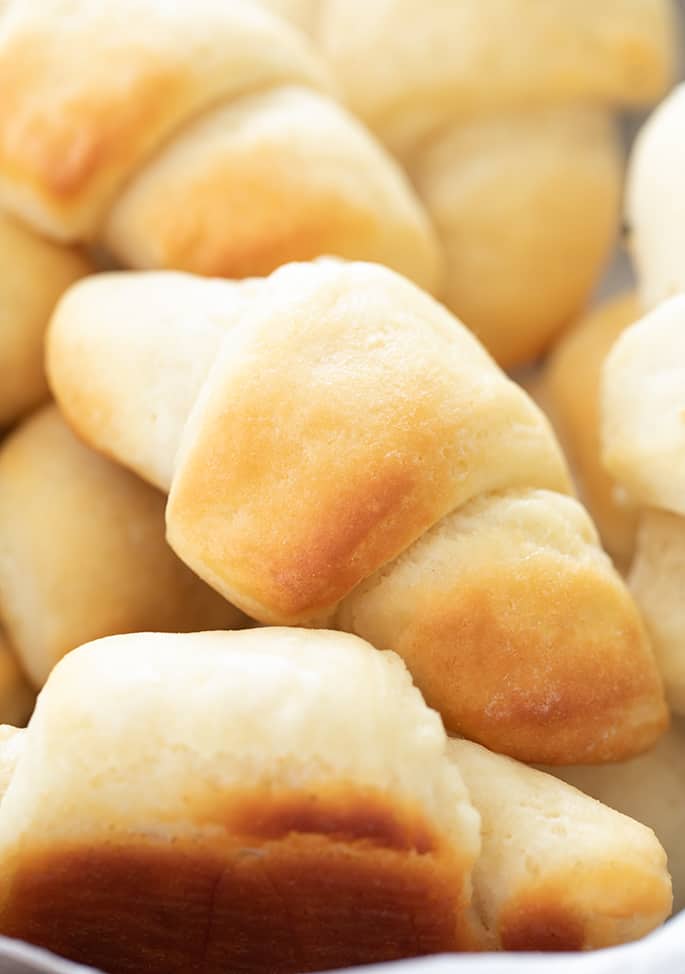
My take
Nicole's Recipe Notes
- Classic dough: I really miss refrigerated canned Pillsbury dough in a can, but you can't buy a gluten free version of it.
- Versatile: Use it to make these classic soft, fluffy buttery rolls, plus a crescent ring, baked brie, pizza rolls, pigs in blankets, and anything else you want to roll inside or bake on top.
- Make ahead: The raw dough keeps in the refrigerator in a tightly sealed container for up to 5 days. Use the dough to make some fresh rolls tonight, and for apple hand pies in a few days.
- Easy to make: This recipe can be made with my specialized gluten free bread flour blend, and also with King Arthur Flour gluten free bread flour or Caputo Fioreglut gluten free flour.
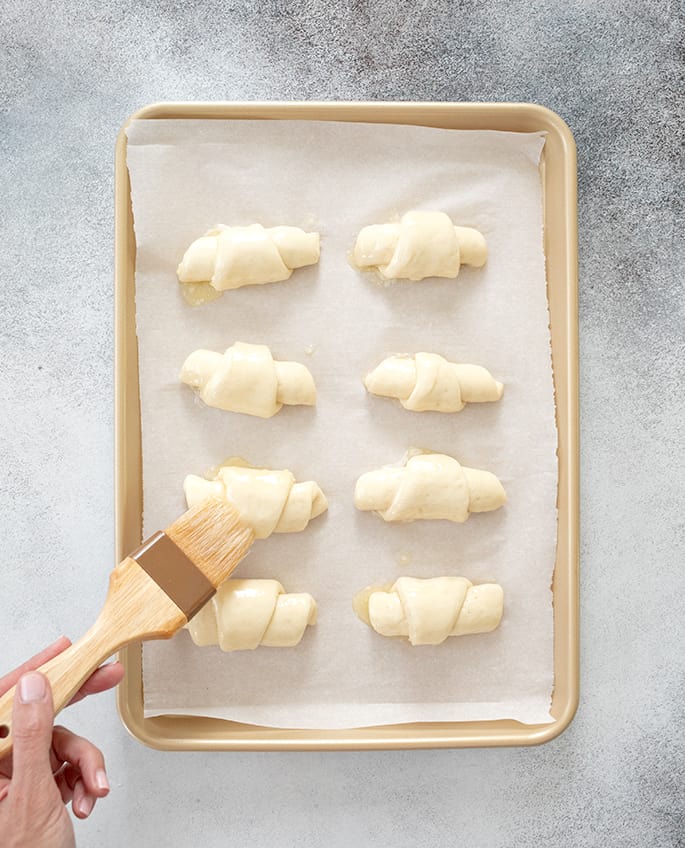
How to make gluten free crescent rolls
Make the starter: We begin with a “starter” or pre-ferment to give the crescent dough a head start in rising, and to make the dough easier to handle. With all the yeast in the recipe, and doubles in size.
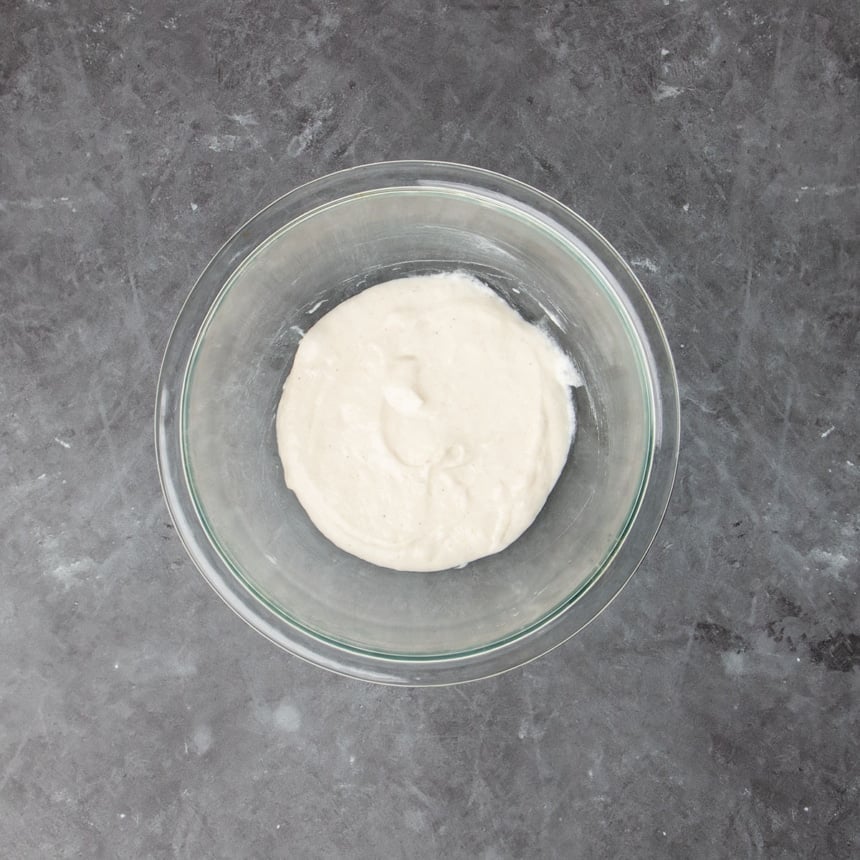
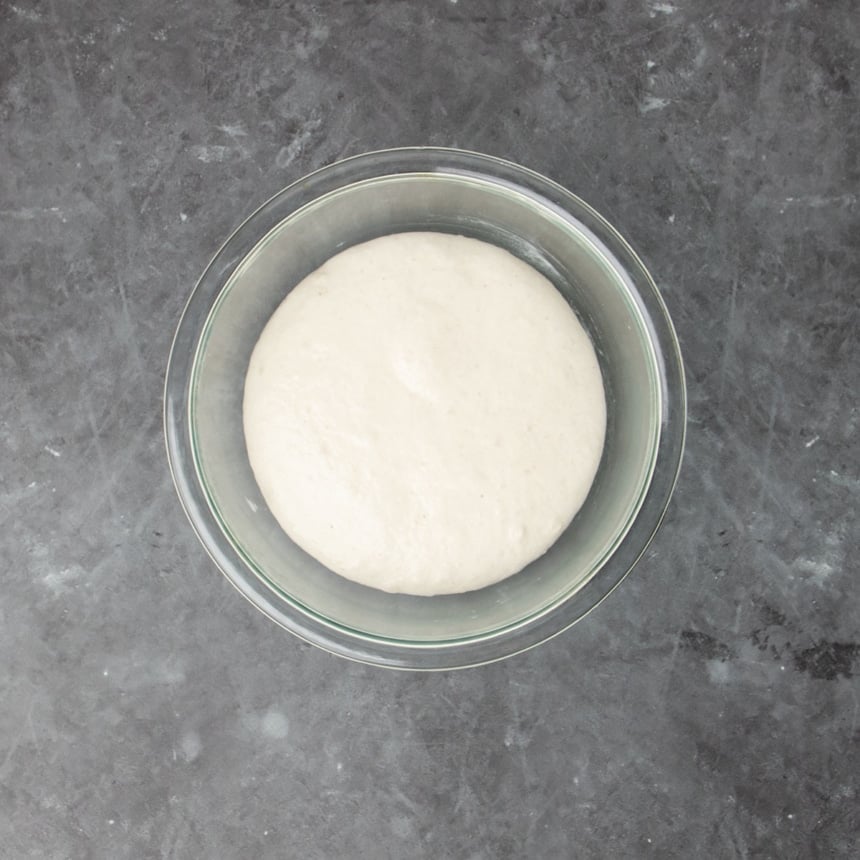
Make the dough: Add all of the wet ingredients (buttermilk, egg, honey, softened butter, and the risen starter) to the bowl of a stand mixer (or a large bowl). Whisk together the gluten free bread flour and salt, add to the wet ingredients, and knead well with the dough hook (works for a handheld mixer with the hook). Transfer the dough to a sealed container, and refrigerate for up to 5 days.
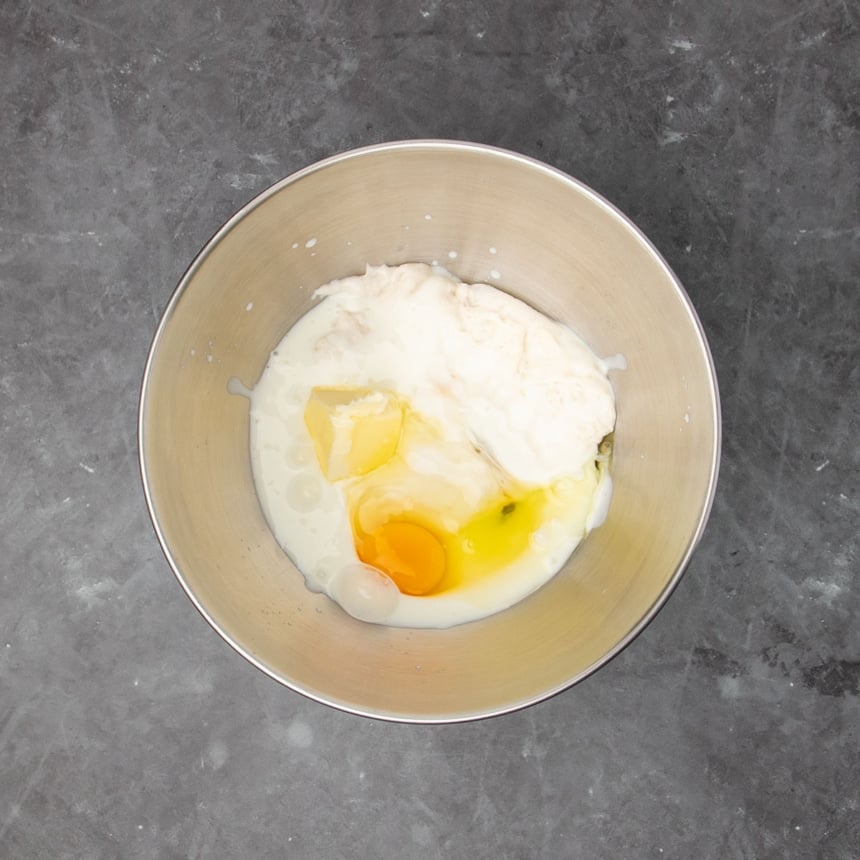
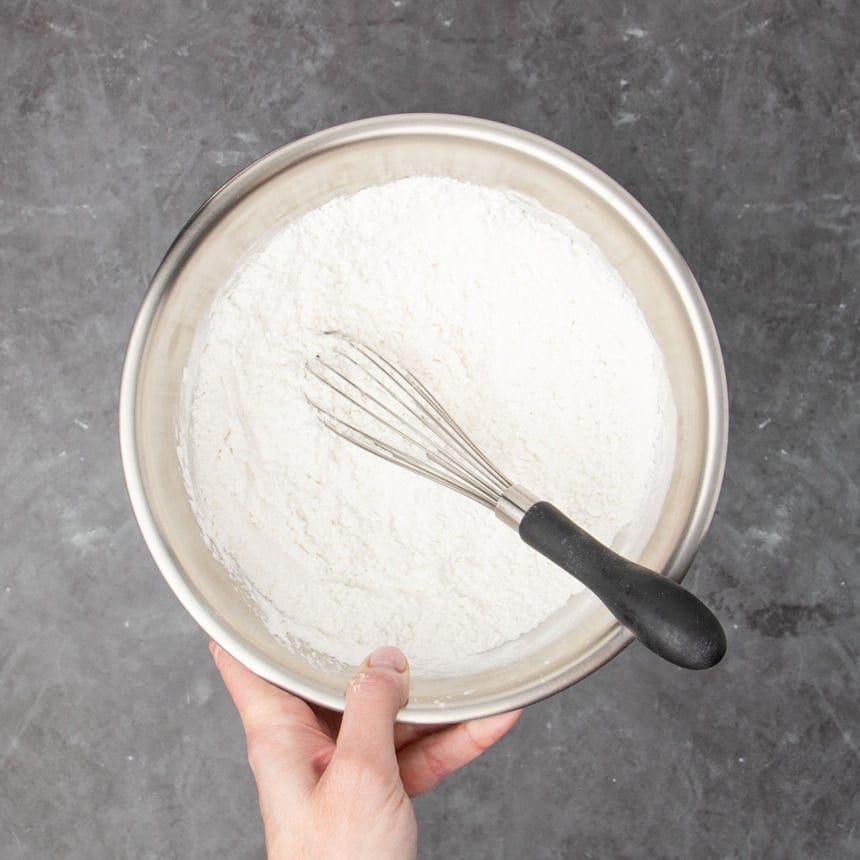
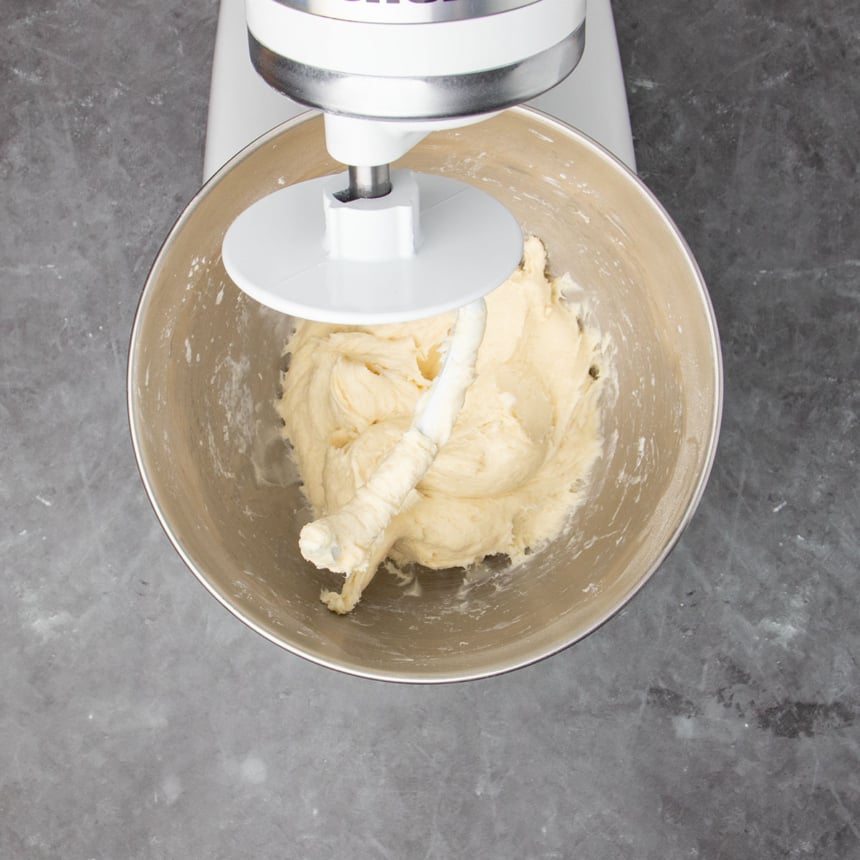
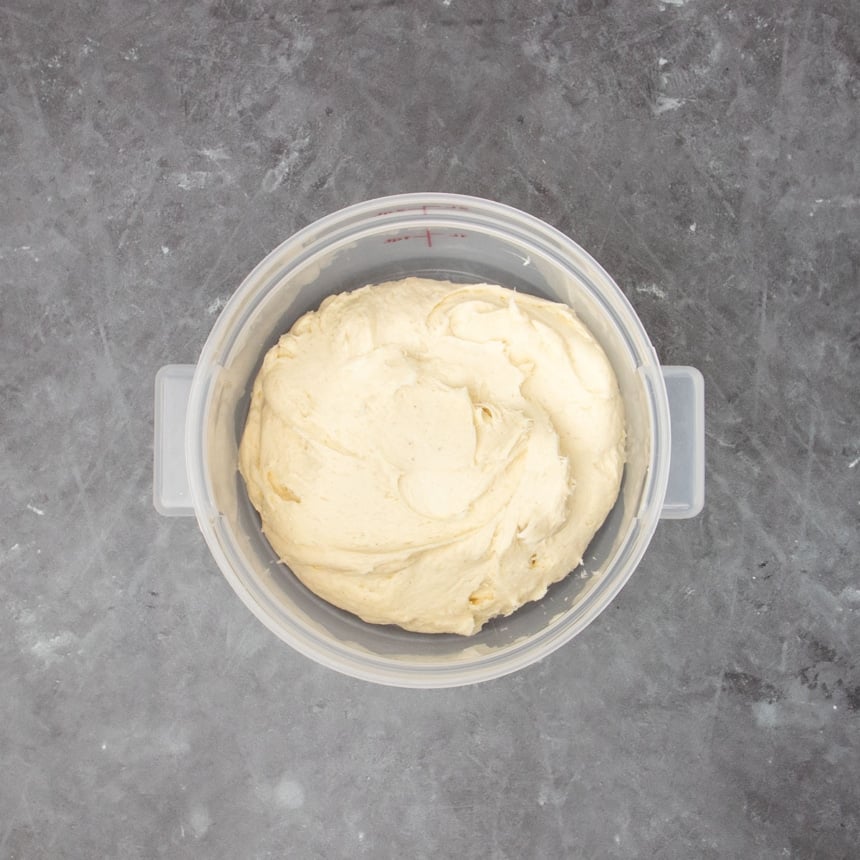
Shape the dough: On baking day, turn the dough out onto a shaping surface, smooth out with a bit of extra flour, and roll into a round. Slice the round into 4 quarters, then each quarter into 3 pieces for 12 triangles. Brush or spread softened butter on top.
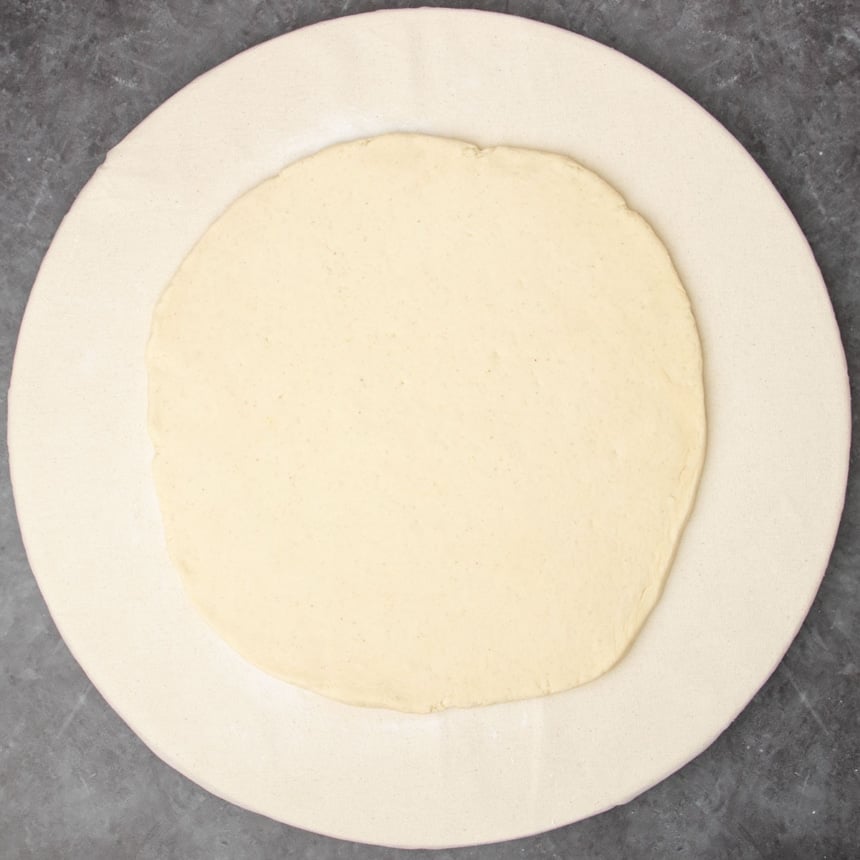
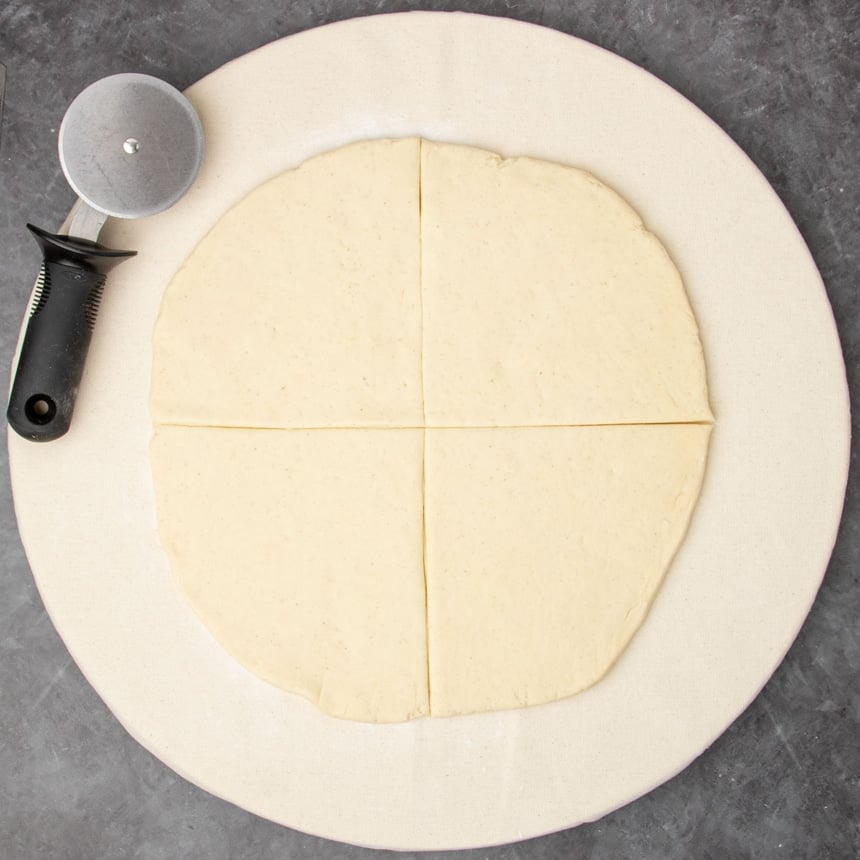
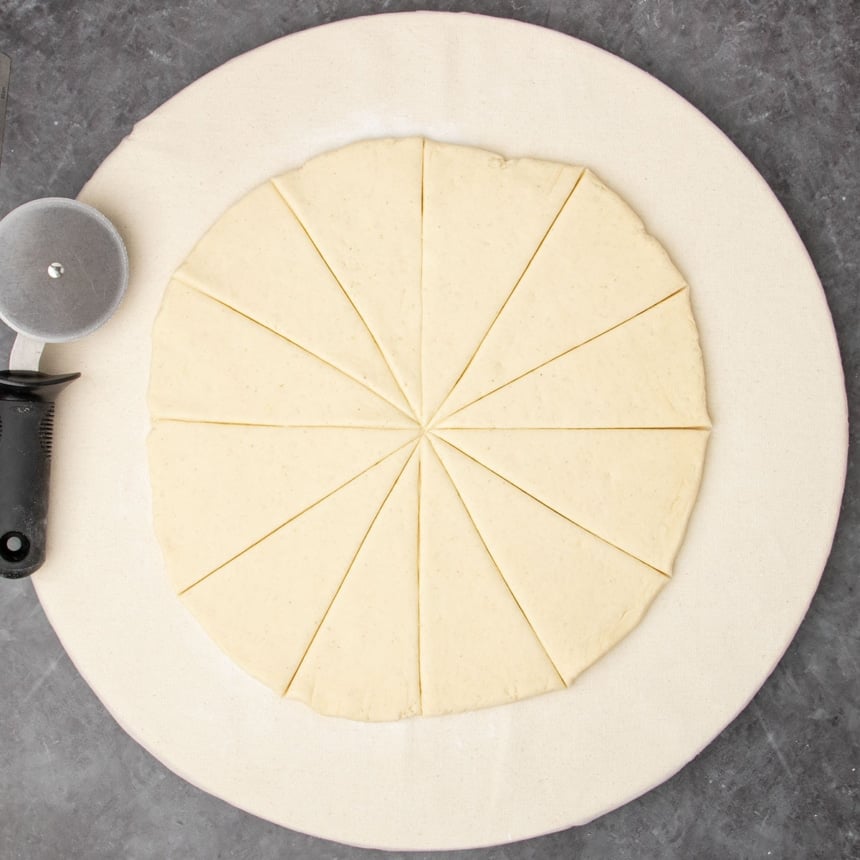
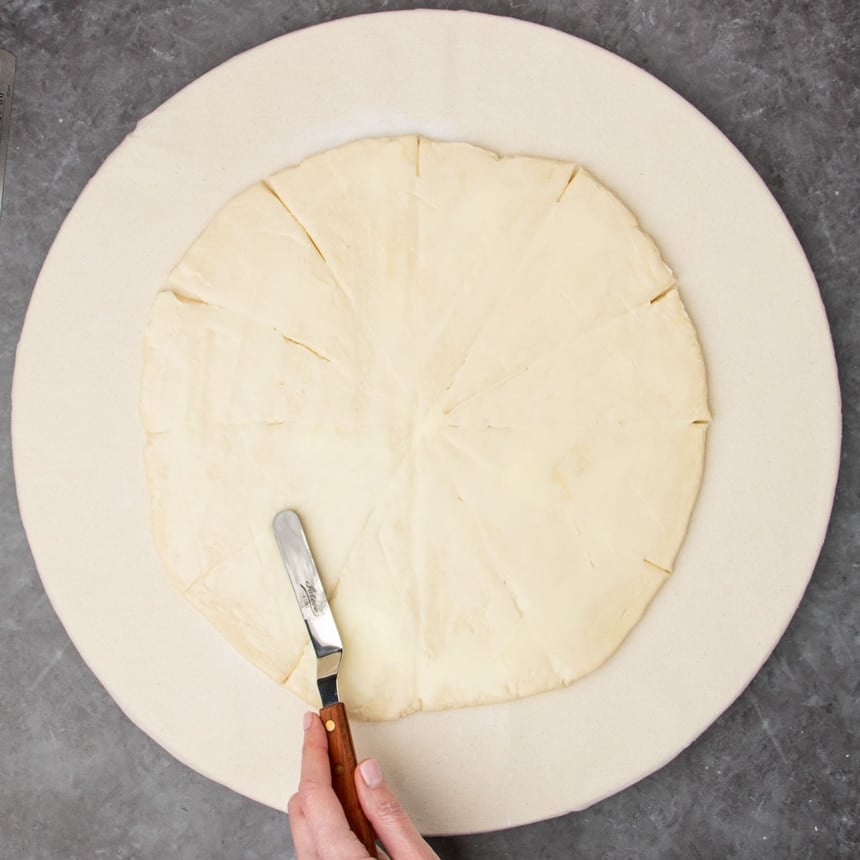
Finish and bake: Separate the triangles and roll each from base to tip. Place on a baking sheet, brush with melted butter (and an egg wash, if using Caputo Fioreglut or KAF bread flour), and bake.
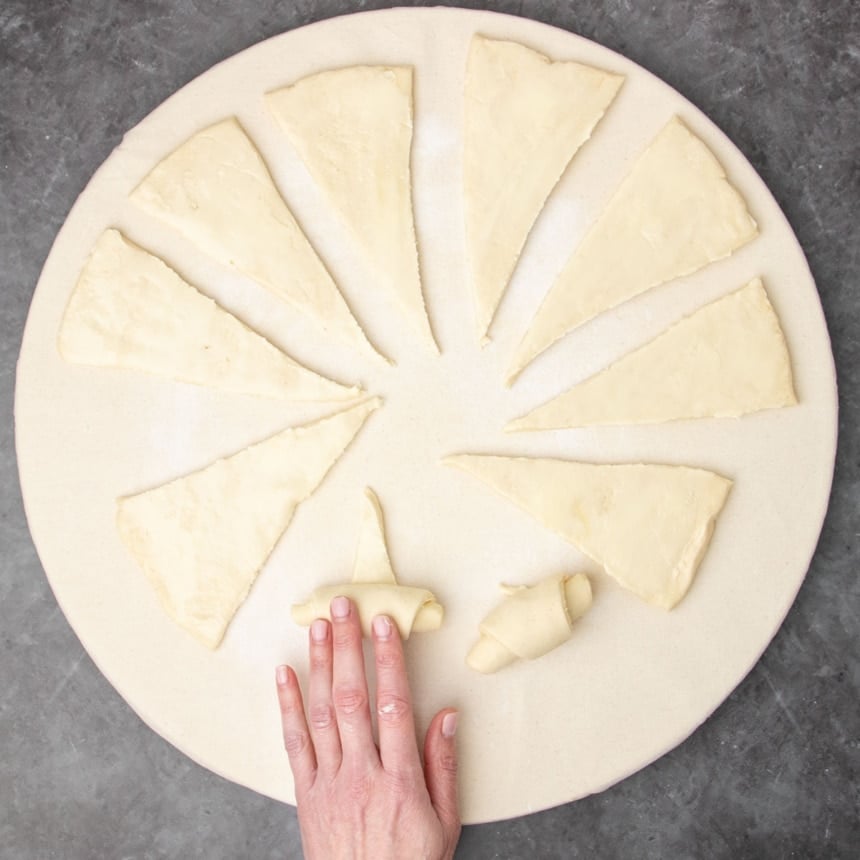
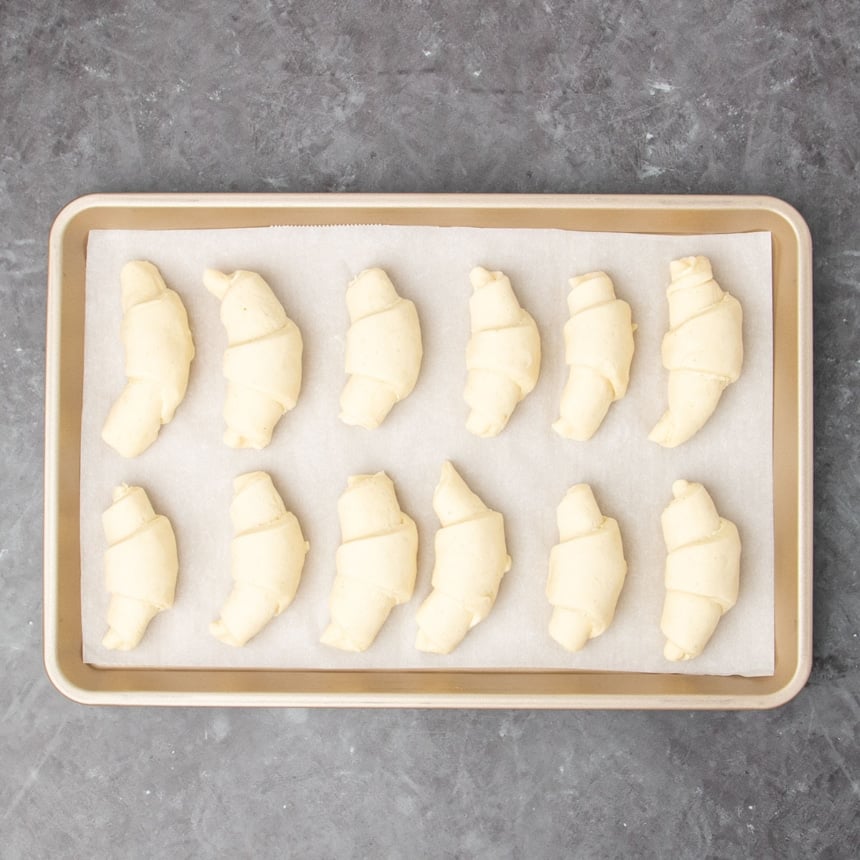
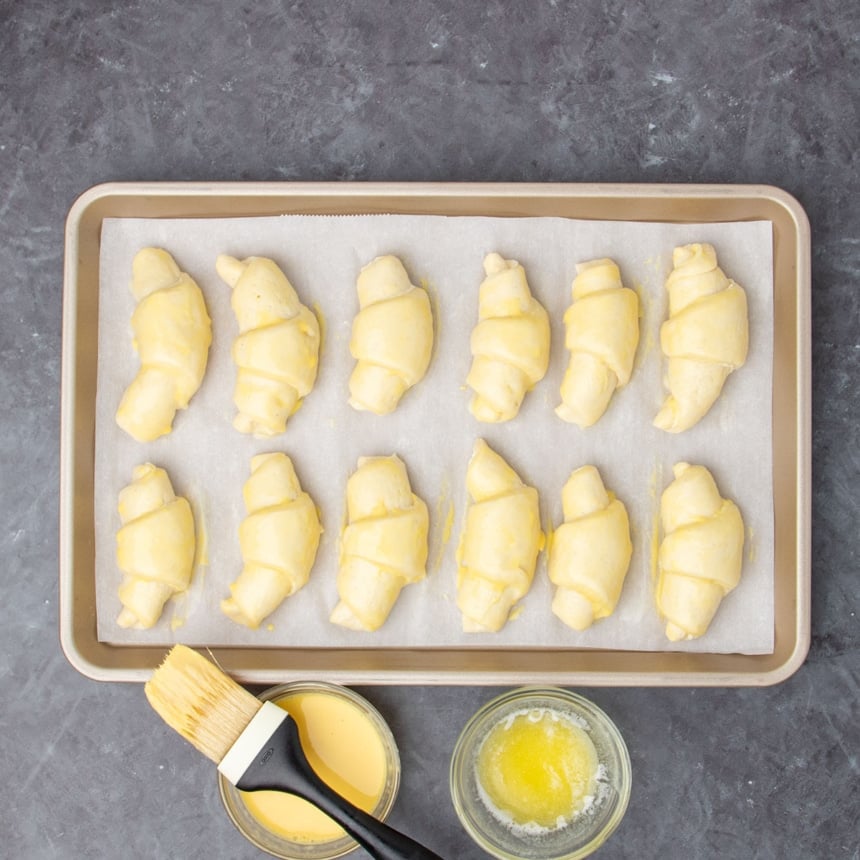
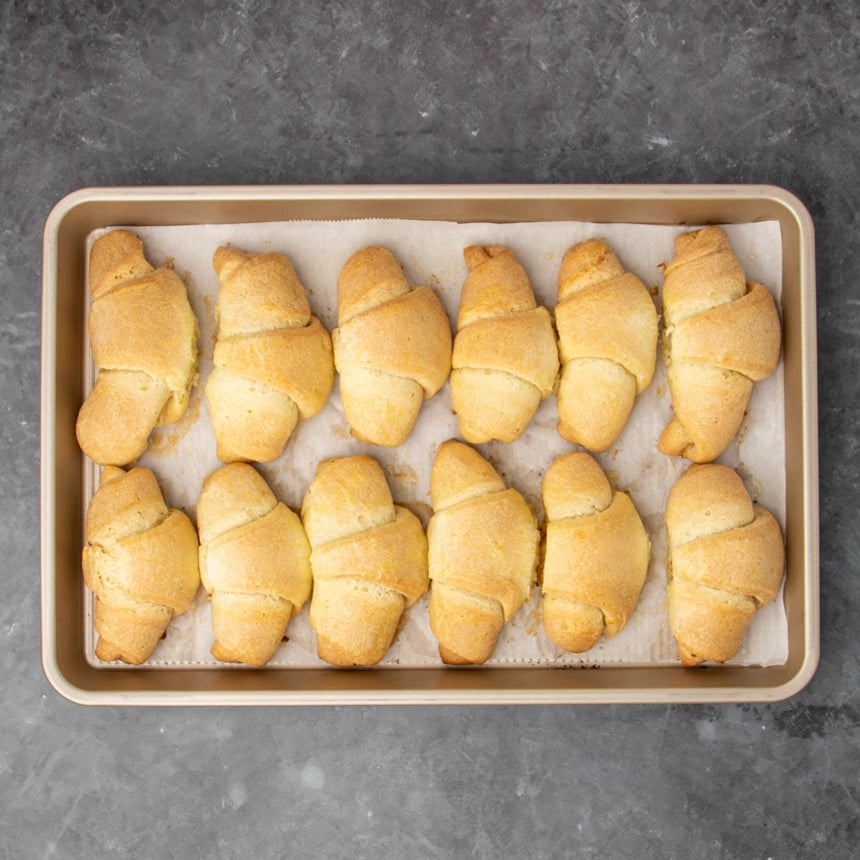
My Pro Tip
Expert tips
Shape chilled dough
Avoid overflouring the dough during shaping by working with cold dough. It's naturally much less sticky that way. And use a light touch during shaping.
Brush with barely-melted butter
We brush the inside and the outside of the rolls with butter before baking. Butter that has just started to melt is soft enough to spread and brush, but less likely to leak out during baking.
Double the recipe
The original recipe was written to make 24 rolls. To test other bread flours, I cut it in half to make 12, and preferred the smaller batch.
If you plan to use it for crescent roll appetizers and snacks from the past, just double the yield to 24 or click the [2X] button in the full recipe below.
Brush with an egg wash
If you're using Caputo Fioreglut gluten free flour or King Arthur Flour gluten free bread flour, the rolls need help browning in the oven. Brush them first with melted butter, then an egg wash.
Choose your flour blend carefully
This recipe needs gluten free bread flour in one form or another to work. An all purpose gluten free flour blend like Better Batter's classic blend or Nicole's Best won't work properly. But there are more bread flour options than ever!

Ingredient substitutions
Dairy free
In place of buttermilk, use half nondairy sour cream, half nondairy milk. In place of regular butter, use block vegan butter (Miyoko's Creamery is my favorite brand, but Earth Balance sticks should work, too).
Avoid using my gluten free bread flour blend, which must contain dairy. Instead, use Caputo Fioreglut or KAF gluten free bread flour (keep in mind that they both contain wheat starch, though, which is safe for celiacs but not if you are allergic to wheat).
Egg free
Try replacing the egg with a “chia egg” (1 tablespoon ground white chia seeds + 1 tablespoon lukewarm water, mixed and allowed to gel).
Yeast
If you don't have instant yeast, you can use active dry yeast. Use just under 1 gram more for a total of 4 grams active dry yeast, and dissolve it first in some of the warm water in the starter first.
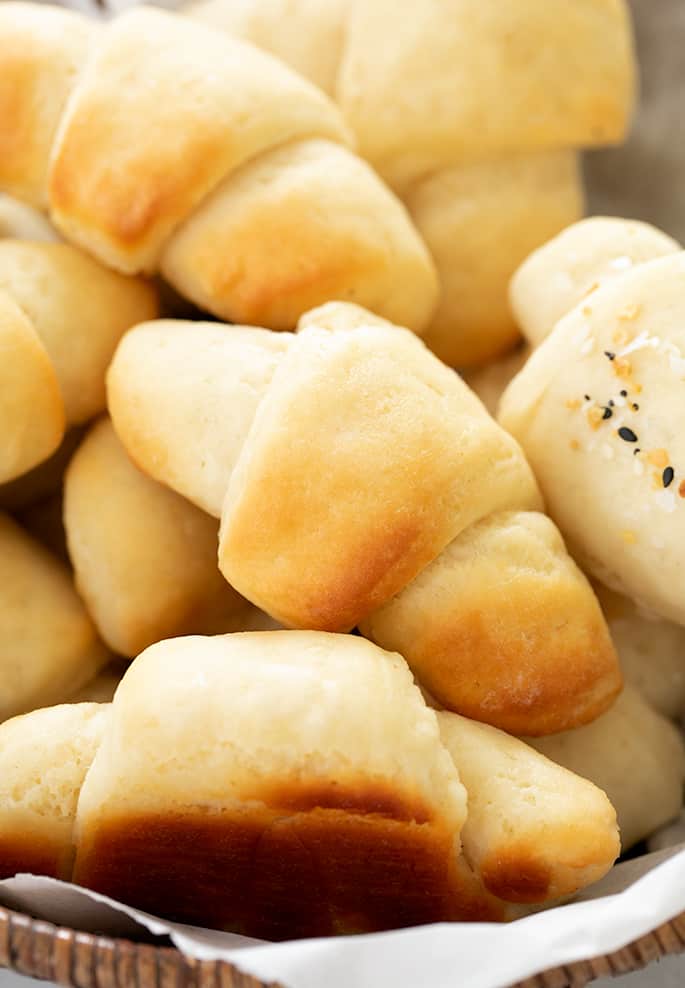
Gluten Free Crescent Rolls Recipe

Equipment
- Stand mixer with dough hook (or handheld mixer with dough hook attachments)
- 1 2 liter proofing bucket or other sealed container
- Pizza or pastry wheel or sharp knife, for slicing the dough
Ingredients
For the starter
- ⅝ cup (88 g) gluten free bread flour blend, (see Recipe Notes)
- 1 ½ teaspoons (6 g) granulated sugar
- 1 teaspoon (3 g) instant yeast, (see Recipe Notes)
- ½ cup (4 ounces) warm water, (about 95°F)
For the dough
- 1 ¾ cups (245 g) gluten free bread flour blend, (see Recipe Notes), plus more for sprinkling
- 1 ½ teaspoons (9 g) kosher salt
- 1 teaspoon (6 g) honey
- ⅜ cup (3 fluid ounces) buttermilk or plain whole milk yogurt, at room temperature
- 1 (50 g (weighed out of shell)) egg, at room temperature
- 2 tablespoons (28 g) unsalted butter, softened
- Risen Starter
- 3 tablespoons (42 g) unsalted butter, just barely melted
- Egg wash, (1 egg beaten with 1 tablespoon milk, cream, or water) optional
Instructions
Make the starter.
- In a medium-size bowl, place the bread flour, granulated sugar, and instant yeast, and whisk to combine well. Add the warm water, and mix until smooth and well-combined. (If using Caputo Fioreglut flour, add the water to the bowl first, followed by the flour, sugar, and instant yeast.)
- The mixture will be thick and shapeless. Cover and set the bowl aside in a warm, draft-free location to rise until doubled in size (about 45 minutes).
Make the dough.
- In a stand mixer bowl (or a large bowl with a handheld mixer with dough hooks), add the honey, yogurt or buttermilk, egg, room temperature butter, and risen starter to the bowl.
- In a separate bowl, whisk together the bread flour and salt, and whisk to combine. Add to the mixing bowl on top of the wet ingredietns.
- Place the bowl in your stand mixer fitted with the dough hook and knead for about 5 minutes on medium-high speed or until the dough is smooth and stretchy, and appears to have lightened a bit in color.
- Spray a silicone spatula with cooking oil spray, and scrape down the sides of the bowl to make sure all the dry ingredients are incorporated.
- Transfer the dough to a bowl or proofing bucket large enough for the dough to rise, and cover tightly with plastic wrap or the top of your proofing bucket.
- Place the dough in the refrigerator for at least 1 hour and up to 5 days.
Shape the rolls.
- On baking day, line a rimmed baking sheet with unbleached parchment paper and set it aside.
- Turn the dough out onto a lightly floured surface, and sprinkle it very lightly with more flour. Handling the dough very gently so you don’t incorporate too much flour into the dough, turn the dough over a few times until it’s smoother.
- Roll the dough into a 10-inch to 12-inch circle, turning the dough over frequently, sprinkling very lightly with more flour as necessary, and moving it around to prevent sticking.
- With a pizza wheel or sharp knife, slice the round of dough into 4 equal pieces, each a very wide triangle. Slice each quarter into 3 equal triangles, making 12 triangles total.
- Brush the dough liberally with about half of the 3 tablespoons of barely melted butter, then allow the dough to sit briefly to allow the butter to set.
- Separate one triangle from the circle, and roll it gently but securely from base to tip. Place the shaped raw crescent roll on the prepared baking sheet, with the tip of the triangle secured on the bottom.
- Repeat with the remaining pieces of dough. Space the rolls about 1 1/2 inches apart on the prepared baking sheet.
Let the rolls rise.
- Cover the baking sheet with lightly oiled plastic wrap, and place it in a draft-free location to rise until about 150% of its original size, or 50% more than the size it started (about 45 minutes).
- The rolls will not double, so do not overproof. If the dough starts to look less smooth on top or break, stop the rising right away.
Bake the rolls.
- About 15 minutes before the end of the rolls’ rise, preheat your oven to 350°F. If you've used Caputo Fioreglut or KAF gf bread flour, preheat the oven to 375°F.
- Once the rolls have finished rising, remove the plastic wrap and brush the tops generously with the rest of the barely melted butter. If you've used Caputo Fioreglut or KAF gf bread flour, brush the the tops of the rolls with an egg wash as well.
- Place the baking sheets in the center of the preheated oven and bake until the rolls are just browned (about 15 minutes).
- Remove from the oven, and serve warm.
Video
Notes
- 475 grams Better Batter original blend all purpose gluten free flour or my mock Better Batter
- 119 grams whey protein isolate
- 71 grams Expandex modified tapioca starch
Nutrition
Nutrition information is automatically calculated, so should only be used as an approximation.
Serving suggestions
Any way you may have used crescent roll dough before, you can use this dough now. Here are some ideas:
Ham and cheese sandwiches
Roll out the dough and slice the round into 6 or 8 pieces instead of 12. Fold a slice of ham and a slice of cheese to fit on the top of the triangle, then roll from base to tip. Bake as directed.
Cinnamon sugar rolls
Mix 1 teaspoon ground cinnamon, 1/4 cup granulated sugar and 1 teaspoon cornstarch. After brushing the triangles with melted butter, sprinkle with the cinnamon sugar. Continue the recipe as written.
make ahead/leftovers
Storage instructions
Once baked, they will stay fresh covered in plastic or in a sealed container for about 2 days. Sprinkle with warm water and bake in a toaster oven at 300°F for 5 minutes to refresh.
For longer storage, cool the rolls completely, wrap tightly in plastic wrap or in a sealed container and freeze for up to 3 months. Defrost one at a time at room temperature, then refresh as described above.
To parbake or partially bake any dough you don't plan to serve right away, bake at 300°F until they are just set but not browned at all (about 10 minutes).
Let them cool, then freeze in a single layer before piling them into a sealed freezer-safe container. To finish baking, defrost almost fully at room temperature, brush with an egg wash or melted butter, then bake at 350°F for 10 minutes or until just browned.
FAQs
No, crescent rolls are not the same as croissants. They are similar in shape, but a crescent roll is bread, and a croissant is pastry. Gluten free croissants are like a cross between crescent rolls and flaky layered buttermilk biscuits.
Depending on what you place inside the rolls, and how much of it, before baking, baking may take a bit longer. Just watch the rolls after about 15 minutes to see when they're beginning to brown. And don't pull the dough tight around the filling or it may break.
Yes! You can roll this dough out into a round or rectangle, bake it until it begins to brown, then top and bake until the toppings melt and bubble.
I'm afraid not! You need a “gluten free bread flour” like KAF gluten free bread flour or Caputo Fioreglut.
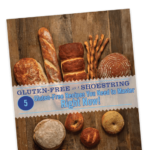

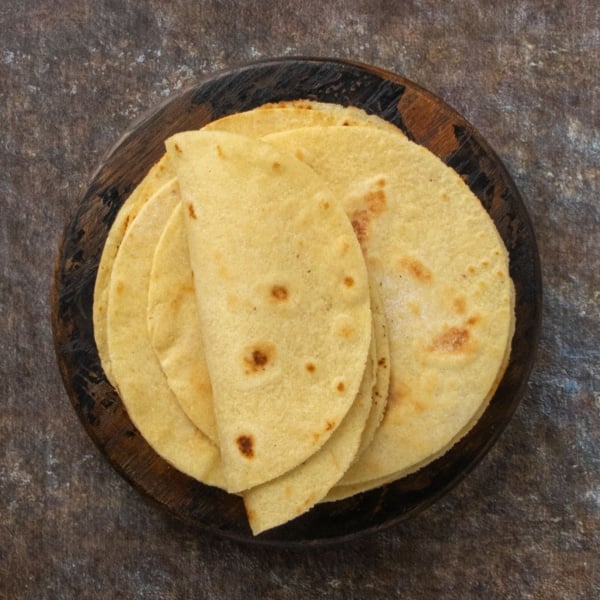
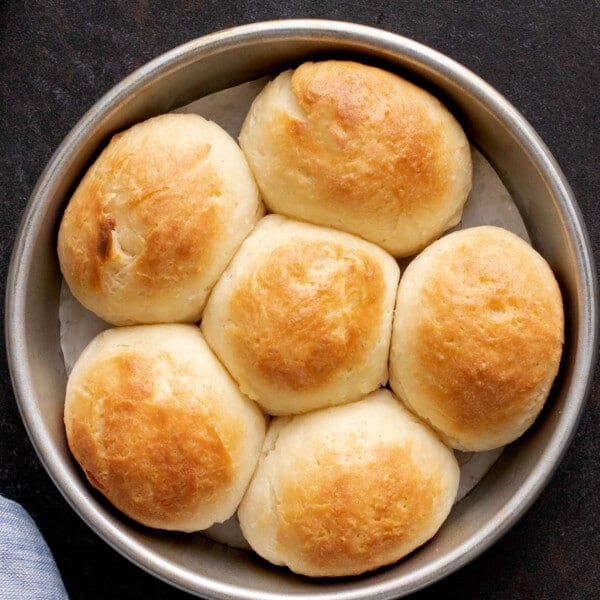
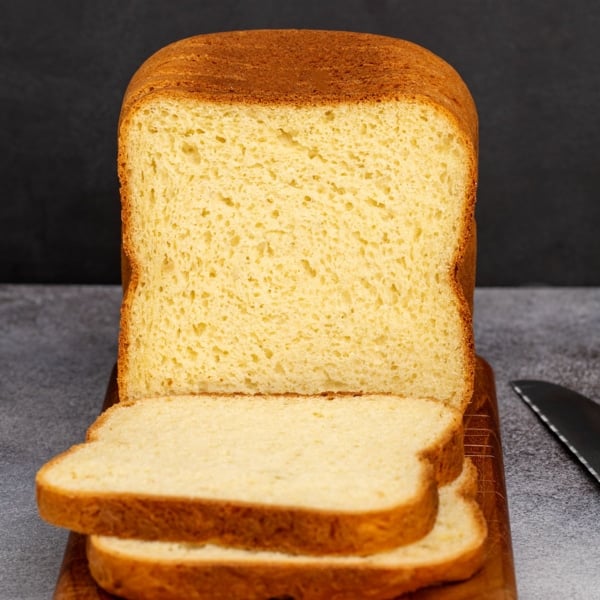
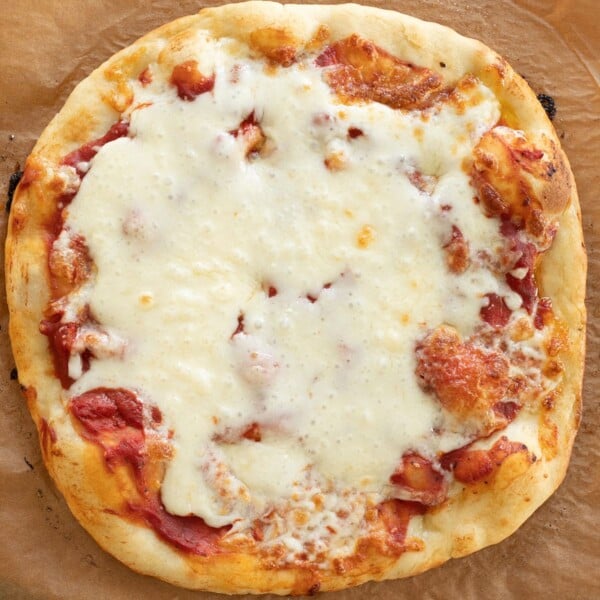









Yesterday, I made your puff pastry as a test before Thanksgiving. I wasn’t expecting it to work and thought I’d have to experiment/practice a lot to get it right. I used Pamela’s all purpose flour. I made 1 crescent roll, 2 cheese straws and 1 patty shell, just to see if it would be edible. I froze the rest of the dough. All 3 items were fantastic on the first try. I’ll have to try this recipe for crescent rolls, but I thought just cutting the puff pastry dough into a triangle and rolling it up made for a treat indistinguishable from a regular crescent roll. Thank you so much for the work you do.
Can you freeze these once made?
Thanks!
You most definitely can, Naomi! You could also try parbaking the ones that you plan to freeze. Just bake them at about 300°F until they are just set but not browned at all (about 8 minutes). Let them cool, then freeze in a single layer before piling them into a sealed freezer-safe container. When you’re ready to bake them, preheat the oven to 350°F, let them defrost almost fully at room temperature, then bake until just browned (about 10 minutes). Fresh rolls!
Thanks for this recipe! I’ve been trying to recreate my grandma’s rohlicky and this might make a nice base for that.
BTW could you please not give up on replacing any dairy at all in a recipe just because the recipe requires milk protein? I know that milk protein is what people with milk allergies react to, but it does not have lactose (as long as it really is isolate). So while people with dairy allergies are unfortunately out of luck if milk protein is necessary, people with lactose intolerance are not. You could include suggestions for replacing yogurt, butter, etc. for them.
(I’ve had good results with coconut cashew yogurt and Melt butter substitute in other recipes; do you think they would work here? Do you have any other suggestions?)
Thanks again!
That’s fair, Alison! I do think you could use plain nondairy yogurt and Melt vegan butter here, yes.
Would it be okay to use Greek yogurt instead of the plain yogurt?
I’m afraid not, Kara. You need the moisture balance of regular yogurt. Greek yogurt is regular yogurt with the moisture drained.
Found your website recently and your recipes are fantastic! I made the milk bread a few days ago and my family absolutely loved it! Going to try to make the steamed meat buns soon, just need to order some coconut milk powder. Also, thank you for adding in the substitutions for other diets, it means I can actually make some of the recipes I wouldn’t be able to otherwise (my family is allergic to a lot of things, including dairy and corn)!
For this recipe, have you tried making it with the Better Batter flour that’s been modified into pastry dough, like you say you can do for your meat bun recipe? Crescent rolls are one of my favorite things, but I haven’t been able to find a good recipe gf for them despite a lot of searching. Your recipes achieve that wonderful fluffy texture for bread, but I’m pretty allergic to dairy so I unfortunately can’t eat whey protein isolate (and therefore can’t eat any of the recipes that use your whey protein isolate and Expandex combo).
Finally, I had a question about your books. Which would have the most recipes that I could make without using dairy? I want to pick one up, but I know you only do gf, not df too, so I don’t know which ones would have recipes that I could easily make df.
Thanks!
I’m afraid you can’t make this recipe with anything other than the bread flour blend, Andrea. I would not buy the Bakes Bread book, since it really relies upon the bread flour. I always recommend the second edition of my very first book (link here, but you can buy it anywhere, including a local bookseller, which would be better for the world!).
Hi Nicole,
I love your recipes but whenever I see the recipe calls for the Expandex and/or whey protein, I take a detour. I don’t know why, but I have used these ingredients in your bread recipe and the taste is not good. What could be causing an unpleasant taste?
I’m afraid taste is a very individual thing, Shalindhi. Perhaps you’re not measuring properly, or not using good quality unflavored whey protein isolate.
Hi Nicole. My name is Disa and I’ve followed you since I got diagnosed 6 years ago. I’ve moved back to Norway and I’m kind of dreading to start all over again with finding bread flour ?as I have now used up my Better Batter ( that I brought back with me ?)and I can’t get potato flour ( neither superfine rice flour ?)to make the mock one. Do you know if some of the European flour like Schar or Semper behaves similar to Better Batter, I see they don’t have the same ingredients ? ?
I also wanted to thank you for making my life as a celiac easier with your fantastic recipes ??
Disa
Hi, Disa, I’m afraid you absolutely cannot make any of my all purpose gluten free flour blends without a superfine rice flour, but you can make your own superfine rice flour (although it’s not especially fun, it’s possible). For more details about making mock Better Batter and what you can and can’t substitute, please click here. And click for the same about bread flour (which is also linked in the recipe here).
Looks delicious, but I don’t see any icons to print or download the recipe.
You can’t download the recipe, Kathy. You can print it by clicking the printer icon at the bottom of the post, next to the maroon “share” button.
Hi Nicole! I’m so glad to see more of your wonderful recipes from the Bakes Bread book showing up here. We love making these in the colder months, but we rarely make them plain. We do the cinnamon sugar thing sometimes, but we’re just as likely to roll up some chocolate chips, baked apples or (my 4 year old’s favorite) hot dogs into the dough before baking. If you (or anyone else) chooses to try the hot dogs remember to slit them down the side first so they don’t explode out of the roll during baking! ( I bet you know why I know that.)
Cheers,
Julie
Hola Nicole, a veces me resulta conplicado hacer algunas recetas porque en España no tengo harina de patata, crees que puedo sustituir por harina de otro tuberculo? Gracias
Hola Pilar, Si haces clic aquí, encontrarás información cerca del final de la página sobre la harina de patata y el almidón de patata.